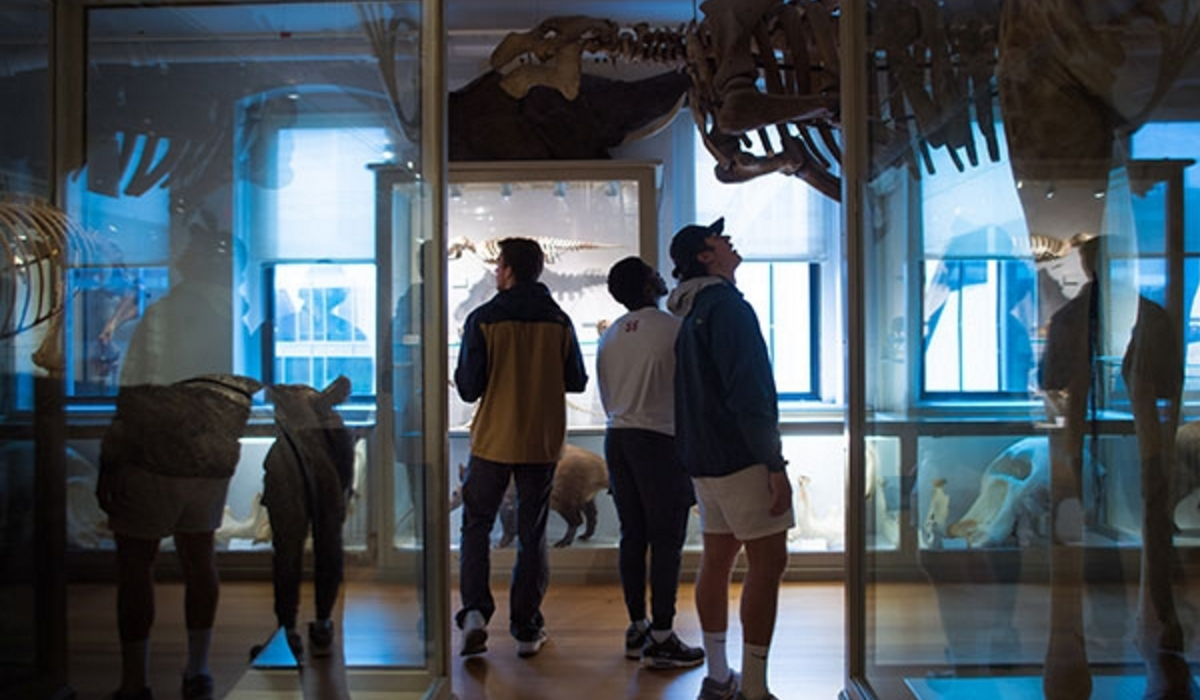Entering the animal world
In a history seminar, MIT engineering students learn about animal intelligence, human ethics, and how to voice their own opinions

On a field trip, Harriet Ritvo and her MIT students went to look at preserved animals on public display, or stored as lab specimens, in collections housed at Harvard University. They encountered hundreds of species, some up close: touching the wings of a pickled bat, the silky fur of a mink, and the sharp claws of a lynx and a lion.
Largely from the MIT School of Engineering, the students were part of a 14-person seminar on history and anthropology known as 21H.380 /21A.411/21H.980 (People and Other Animals). The class explores topics like how ideas about animal intelligence and agency have shifted over time, the human moral obligations to animals, and the limits imposed on the use of animals.
Ritvo, the Arthur J. Conner Professor of History at MIT, and a pioneer in the field of animal-human cultural studies, divides the students’ explorations into units, including the history of hunting, the domestication of livestock, and the exploitation of animal labor.
On this day’s outing, the aim was to “see how dead animals are displayed, and see behind-the-scenes how the displays are produced,” said Ritvo to her class. “We’ll see collections of dead specimens in various forms — stuffed, skins, skeletons.”
. . .
Asked about her experience in the class, Veronica Padron said: “In most engineering classes, you are told how things work. You apply principles. This class is more about interpreting meaning. We employ a different style of exploration and discussion.”
Marcus Urann, a junior studying mechanical engineering, appreciates such moments of dialogue. “You can get lost in the mix in engineering. We have large classes with hours of lectures. In this class, we meet weekly and discuss issues in depth,” he said. “It gives you a way to voice an opinion.”
The field trip wrapped up in the Glass Flowers Exhibit, a collection of models of more than 800 plant species. Students quickly handed Ritvo their final research papers before heading back to MIT. Watching them go, Ritvo said students in science and engineering benefit greatly from the lessons that humanities and social sciences offer. “Students learn a different way of understanding the world.”
Suggested links